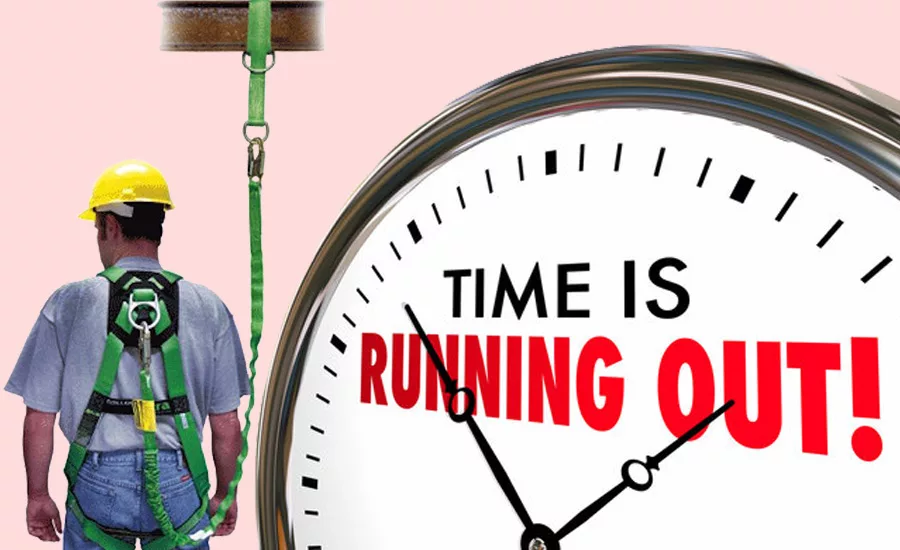Roofing Safety
The Impact of Time Pressure on Fall Hazards for Roofing Contractors

Dozens of roofing contractors die every year from work-related injuries, many of which involve falls from roofs or ladders.
The majority of falls are attributed to a lack of supervision or improper training. Another common factor, though, is time pressure and the need to rush to get jobs done by specific deadlines.
We’re highlighting some of the most important things roofers need to know about time pressure and its impact on fall hazards, as well as how to prevent falls and maintain safety on the job site.
The Link
Time pressure is described as an unfavorable ratio between the amount of time required to accomplish a task and the amount of time available.
Roofers and other construction professionals often run into time pressure on the job. This phenomenon can stem from many different issues, including the following:
- Poor Planning: Insufficient planning often results in workers having to rush to get work done. Rushing can cause workers to skip steps or overlook potential issues, creating safety hazards for themselves and their clients.
- Unrealistic Deadlines: Unrealistic deadlines put unnecessary pressure on roofers, forcing them to rush. Rushing, in turn, increases the likelihood of accidents and injuries, such as falls, occurring.
- Weather: When weather isn’t factored into the planning stage, it can create slowdowns and interfere with a team’s ability to work, sometimes for days on end. These setbacks may cause workers to rush when they’re able to return to the job site to try and get back on schedule.
Rushed Projects and Fall Hazards
Regardless of the reasoning behind the rush, placing unnecessary and excessive time pressure on roofers increases the risk of falls, fall-related injuries, and fatalities.
The following are some examples of fall hazards roofers and roofing contractors may overlook because they’re rushing to complete a project on time
- Roof Stability: Workers must check that the roof is strong enough to support the weight of multiple people moving around at once. If the trusses are not intact or the underlayment is damaged, the risk of falling off or through the roof increases.
- Ladder Security & Placement: Time pressure and rushing may cause workers to be haphazard with ladder security and placement. For example, they might forget to check that the ladder is secure and positioned at a 4:1 angle.
- Weather Conditions: Ice, snow, and wind can all create a slippery roof surface that increases workers’ chances of falling. If they feel rushed, workers may not take the proper precautions when working on such surfaces.
- Unguarded Skylights and Poorly Covered Holes: Open holes on the roof, especially those that aren’t properly guarded or covered, present increased fall hazards. Roofers who are rushing to beat the clock may also be less aware of these issues and more prone to falling through them.
- Edge and Pitch Awareness: Sometimes, roofers get so wrapped up in their work (especially if they’re feeling rushed) that they forget where the roof edge is located or how steep the roof is — both of which increase their risk of misstepping and falling.
- Lack of or Improper Use of Fall Protection Equipment: If workers haven’t anchored a railing correctly or have weak tie-off points, they’re more likely to fall even though they have access to the proper equipment. They must take the time to ensure they’re using the equipment correctly, which can be difficult when they’re experiencing time pressure.
Do you encounter many or any of these same challenges when it comes to safety? How do you meet those challenges? Tell us in the comments.
Steven John Cumper is founder of Medshop and an international businessman with a strong background in biomedical science and osteopathic medicine. He is dedicated to academia, entrepreneurship, and helping companies by combining his diverse knowledge and experience.